The Black-headed Ibis (Threskiornis melanocephalus) is a captivating bird species across wetlands and agricultural areas in the South, Southeast, and parts of the Middle East.
Known for its striking appearance, friendly behavior, and diverse diet, this ibis species holds a special place in the ecosystems it inhabits.
With its distinctive black head contrasting against its white plumage, the Black-headed Ibis is easily recognizable and has fascinated bird enthusiasts and scientists for generations.
This introduction delves into the fascinating world of the Black-headed Ibis, exploring its ecology, behavior, conservation status, and cultural significance.
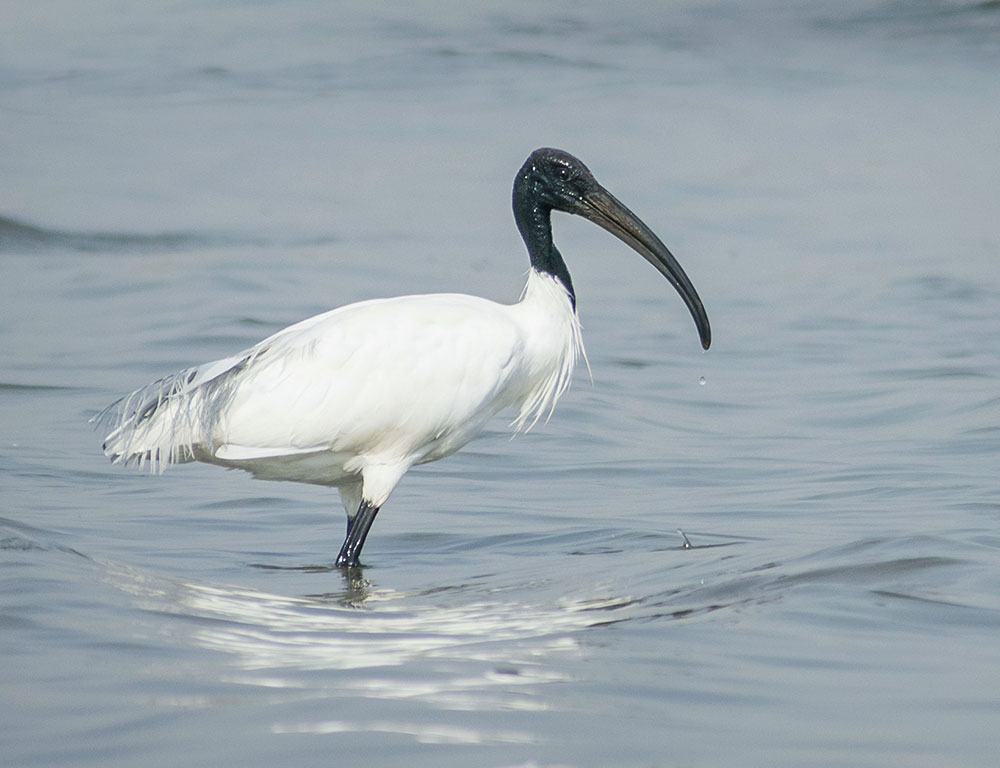
What Are Some Common Characteristics Of Black-Headed Ibis?
The Black-headed Ibis (Threskiornis melanocephalus) is a fascinating bird species with several common characteristics that define its biology, behavior, and cultural significance.
Found in various regions across Asia, this ibis species exhibits unique traits that make it an integral part of its ecosystem and cultural lore.
Physical Characteristics Of Black-Headed Ibis
With its elegant posture and vibrant plumage, the black-headed ibis captures the attention of birdwatchers and enthusiasts alike.
Plumage
The most notable physical feature of the Black-headed Ibis is its striking black head and neck, which contrasts sharply with its white body plumage. This bold coloration extends down the neck and onto the upper back, creating a striking visual display.
Long, Decurved Bill
Black-headed Ibises possess a long, slender bill that curves gently downwards. This specialized bill is well-adapted for probing and capturing prey in shallow water, reflecting the ibis’s foraging habits.
Red Facial Skin
Adults of the species typically exhibit red facial skin around the eyes and base of the bill, adding to their distinctive appearance. This feature becomes more prominent during the breeding season and serves as a visual signal for courtship and communication.
Long Legs
Like other wading bird species, the Black-headed Ibis has long legs adapted for wading through shallow water while foraging for food. These legs are sturdy and provide stability when walking on uneven terrain.
White Plumage
Apart from the black head and neck, the body plumage of the Black-headed Ibis is predominantly white. This coloration extends from the upper back down to the underparts, with a clean and crisp appearance.
Broad Wings
In flight, Black-headed Ibises display broad wings with contrasting black flight feathers. These wings enable them to soar gracefully and cover long distances between foraging sites during migration or daily movements.
Size
The Black-headed Ibis is a medium-sized bird, with adults typically measuring around 65-75 centimeters in length. This size places it between more giant herons and smaller egret species, making it easily recognizable in its habitat.
Distribution And Habitat
Black-headed Ibises are predominantly found in South and Southeast Asia, inhabiting various wetland habitats such as marshes, swamps, lakes, and flooded grasslands. They are often associated with agricultural areas and human settlements.
Behaviour And Ecology
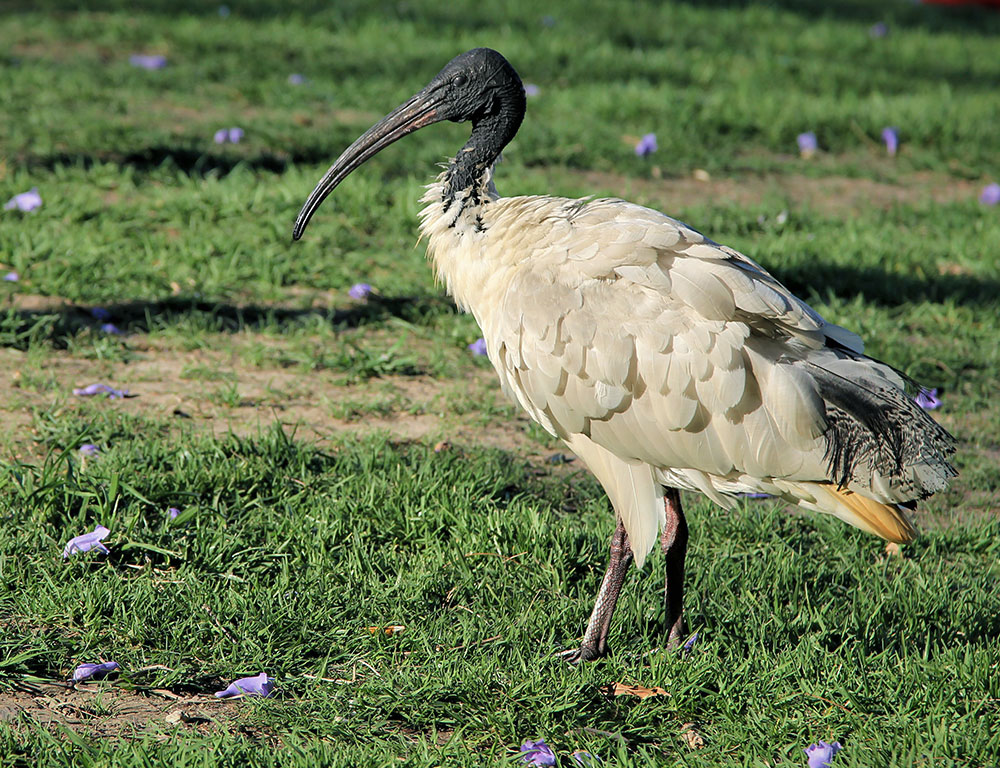
These ibises are typically sociable birds, often seen in small groups or mixed flocks with other wading bird species. They forage in shallow water, probing the mud with their long bills to capture prey such as fish, amphibians, crustaceans, and insects.
Cultural Depiction
Black-headed Ibises are significant in various cultures across their range and are sometimes revered as symbols of prosperity, good fortune, or wisdom. They may feature in local myths, folklore, and religious traditions.
Taxonomy
| Taxonomy Level | Classification |
| Kingdom | Animalia |
| Phylum | Chordata |
| Class | Aves |
| Order | Pelecaniformes |
| Family | Threskiornithidae |
| Genus | Threskiornis |
| Species | T. melanocephalus |
Nesting Habit Of Black-Headed Ibis
| Nesting Habit Feature | Description |
| Nesting Sites | Black-headed Ibises typically nest in trees, reed beds, or dense vegetation near water bodies, often in colonies. |
| Nesting Material | They construct their nests using sticks, twigs, grass, and other plant materials, forming a platform or bowl-shaped structure. |
| Nesting Behavior | During the breeding season, Black-headed Ibises gather in large colonies, engaging in courtship displays and mate selection. |
| Nesting Season | Breeding season varies depending on location, usually occurring during the warmer months when food availability is high. |
| Nesting Eggs | Clutches usually consist of 2-4 eggs, which both parents incubate for around 3-4 weeks. |
| Incubation Period | After hatching, chicks are cared for by both parents, who feed and protect them until they fledge, usually within 6-7 weeks. |
| Nesting Site Defense | Both parents vigorously defend their nesting sites from predators and intruders, using vocalizations and physical displays. |
Conservation Status
The conservation status of the Black-headed Ibis varies across its range, with some populations facing threats from habitat loss, pollution, and hunting. Conservation efforts are underway to protect critical wetland habitats and mitigate these threats.
Appearance
Black-headed Ibises are characterized by their striking black head and neck contrasting with white plumage on the body. They have long, curved bills, red facial skin, and long legs adapted for wading.
Diet And Nutrition
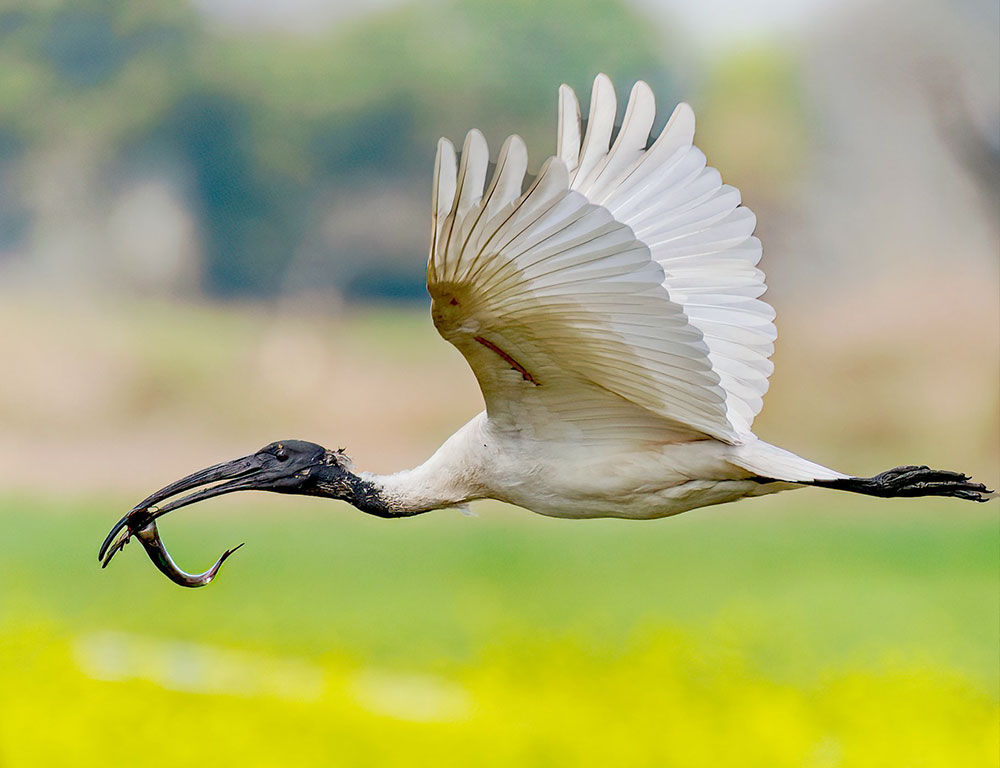
Black-headed Ibises primarily eat small aquatic animals and insects, which they capture by probing in shallow water. They play a crucial role in controlling insect populations and maintaining the health of wetland ecosystems.
Population
While specific population data is limited, Black-headed Ibises are generally considered to have stable populations in their range. However, localized declines may occur due to habitat degradation and human disturbances.
Overall, the Black-headed Ibis embodies a unique blend of ecological, cultural, and aesthetic significance, making it a captivating species worthy of study and conservation efforts.
Description of the Ranging Map Of Black-headed Ibis
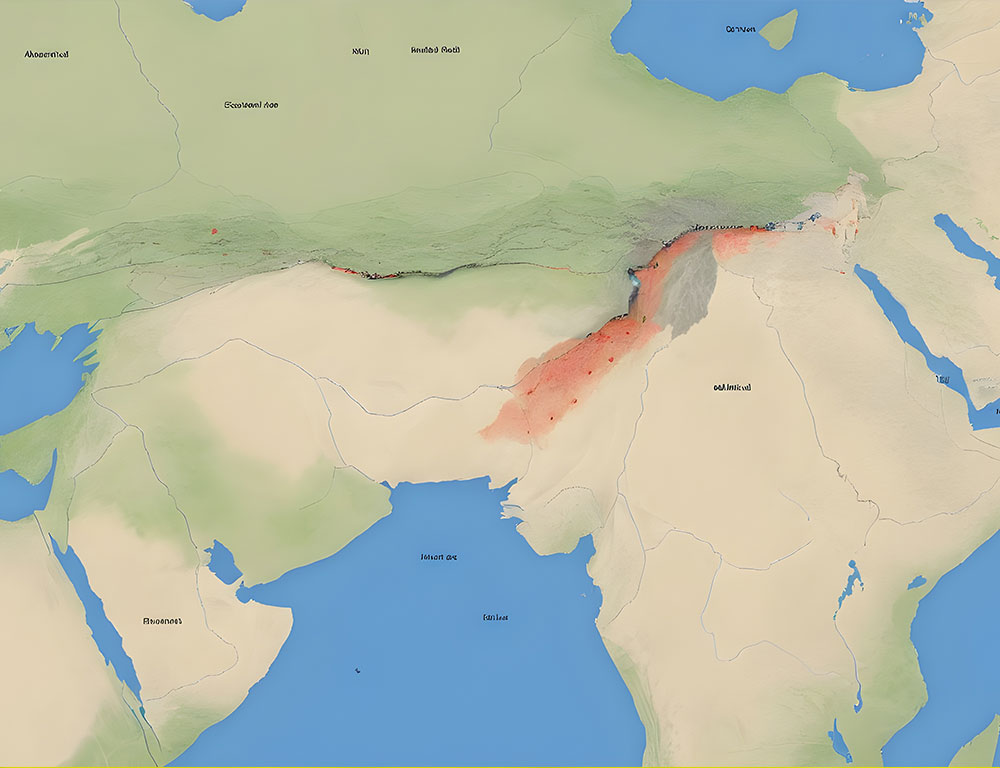
The Black-headed Ibis (Threskiornis melanocephalus) is a large wader with a white body and a distinctive bare black head and neck.
Both males and females share similar appearances, featuring grayish tail feathers. This species is commonly found around wetlands, agricultural fields, coastal areas, and even in dry fields and human-modified landscapes.
The Black-headed Ibis is native to South and Southeast Asia, ranging from India to Thailand. Adults measure 65–76 cm in length, with a striking white plumage contrasted by a black neck and head, along with a down-curved black beak
What Does Black Ibis Eat?
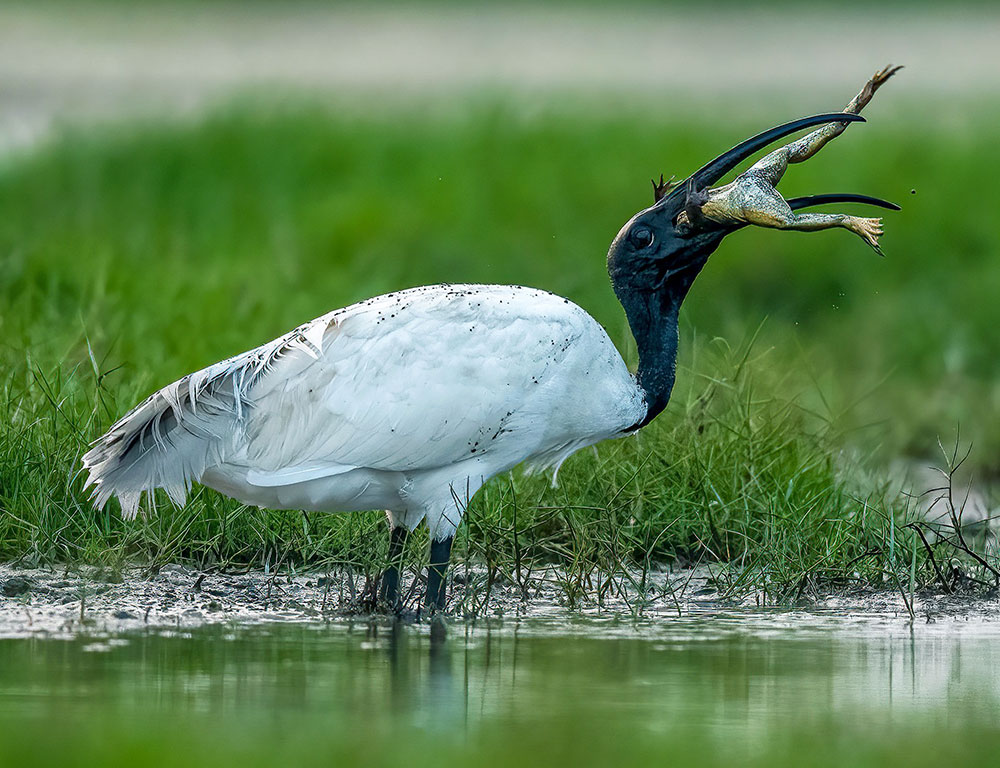
The Black Ibis, also known as the Indian Black Ibis or simply Black Ibis (Pseudibis papillosa), is a bird species known for its striking appearance and varied diet.
These omnivorous birds play a crucial role in their ecosystems. They consume a wide range of food items, contributing to nutrient cycling and ecosystem balance.
Invertebrates
Black Ibises feed on various invertebrates, including insects such as grasshoppers, beetles, caterpillars, and termites. They forage in grasslands, wetlands, and agricultural fields, searching for these small prey items among vegetation and soil.
Crustaceans
In addition to insects, Black Ibises also consume crustaceans such as crabs and crayfish, which they may find in marshes, mangroves, and shallow water bodies. Their long, curved bills are well-suited for capturing and handling these aquatic prey.
Small Fish
Black Ibises are opportunistic feeders and may occasionally prey on small fish, particularly in wetland habitats where fish are abundant. They wade through shallow water, using their bills to probe and catch fish swimming near the surface.
Amphibians
Amphibians such as frogs and tadpoles form another component of the Black Ibis diet. These birds may capture amphibians in marshes, ponds, and other freshwater habitats, where they are abundant and easily accessible.
Reptiles
Black Ibises may also prey on small reptiles, such as lizards and snakes, which they encounter in their foraging areas. They use their sharp bills to grasp and consume these vertebrate prey, supplementing their diet with additional protein and nutrients.
Small Mammals
Although less common, Black Ibises may occasionally feed on small mammals such as mice, shrews, and voles. They may opportunistically hunt for these prey items in grasslands and agricultural fields, particularly during food scarcity.
Plant Matter
While primarily carnivorous, Black Ibises consume plant matter such as seeds, grains, and vegetation. They may supplement their diet with these items, particularly during the non-breeding season when animal prey may be less abundant.
Overall, the Black Ibis exhibits a diverse and adaptable diet, allowing it to exploit various food resources in its habitat. This dietary flexibility contributes to its success as a species and highlights its importance in maintaining the balance of ecosystems where it occurs.
Some Interesting Facts About The Black Headed Ibis
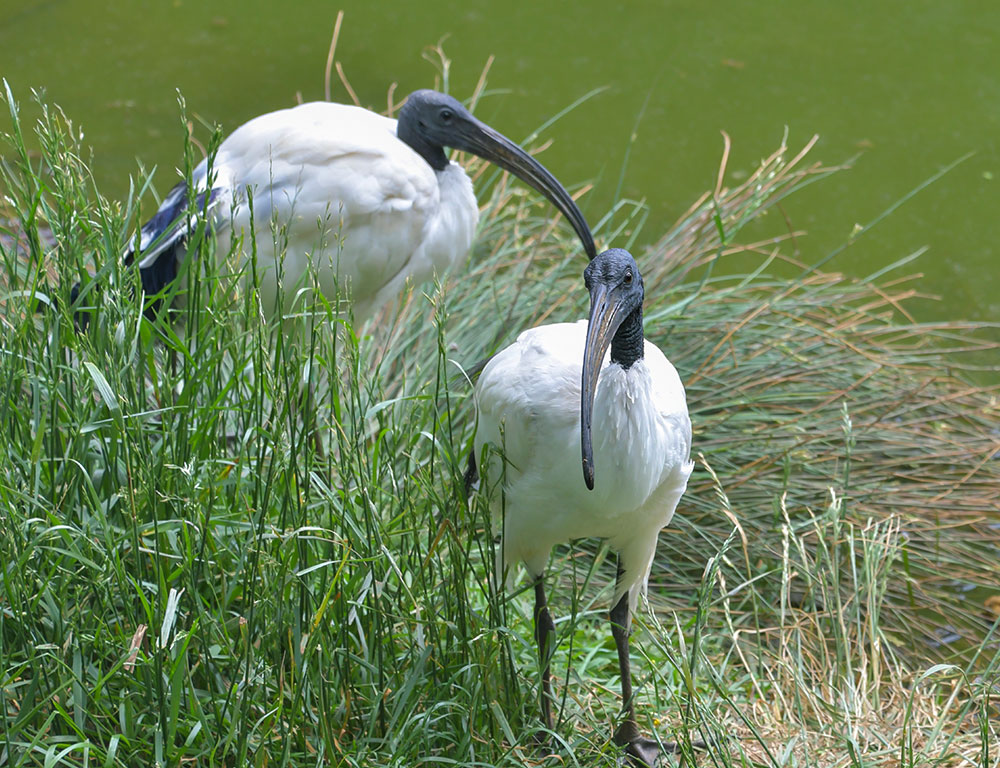
The Black-headed Ibis (Threskiornis melanocephalus) is a fascinating bird species with several intriguing characteristics that distinguish it in the avian world.
Found in wetlands and agricultural areas across South Asia, Southeast Asia, and parts of the Middle East, these ibises exhibit behaviors and adaptations that make them a subject of interest for bird enthusiasts and scientists alike.
Breeding Colonies
During the breeding season, Black-headed Ibises often gather in large colonies, nesting in trees or reed beds near water bodies. These colonies can comprise hundreds to thousands of individuals, creating a bustling and noisy spectacle.
Social Behavior
Black-headed Ibises are sociable birds and often forage and roost in groups. They may form mixed flocks with other waterfowl species, such as herons, egrets, and ducks, benefiting from safety in numbers and shared foraging opportunities.
Courtship Displays
During courtship, Black-headed Ibises engage in elaborate displays to attract mates. These displays may involve vocalizations, head bobbing, bill snapping, and synchronized movements, showcasing the birds’ vitality and suitability as breeding partners.
Feeding Habits
Black-headed Ibises are opportunistic feeders, consuming various prey items, including fish, amphibians, crustaceans, insects, and even small mammals. Their long, curved bills are adapted for probing and capturing prey in shallow water and soft mud.
Breeding Success
Despite threats like habitat loss and disturbances, Black-headed Ibises have adapted well to human-modified landscapes. They may even benefit from agricultural practices that create suitable foraging habitats.
Parental Care
Both parents share incubation and chick-rearing duties, demonstrating high parental care. They vigorously defend their nesting sites and offspring from predators and intruders, ensuring the survival of their young.
Conservation Concerns
While the IUCN currently lists Black-headed Ibises as a species of Least Concern, their populations may be declining in some regions due to habitat loss, pollution, and hunting pressures.
Conservation efforts are underway to protect their wetland habitats and mitigate these threats, ensuring the long-term survival of this charismatic bird species.
Overall, the Black-headed Ibis captivates with its social behavior, courtship displays, adaptable feeding habits, and dedication to parental care, making it a species worthy of admiration and conservation attention.
Conclusion
This article explores the fascination of the Black-Headed Ibis, including its remarkable appearance, diverse nutrition, and unique behaviours.
The Black-headed Ibis stands as a symbol of resilience and adaptability in changing landscapes and human activities.
While facing habitat loss, pollution, and hunting threats, this charismatic bird species continues to thrive in wetland habitats and agricultural landscapes.
By raising awareness, implementing conservation measures, and fostering appreciation for these magnificent birds, we can ensure the continued survival of the Black-headed Ibis and preserve its place in the natural world for future generations to enjoy and cherish.